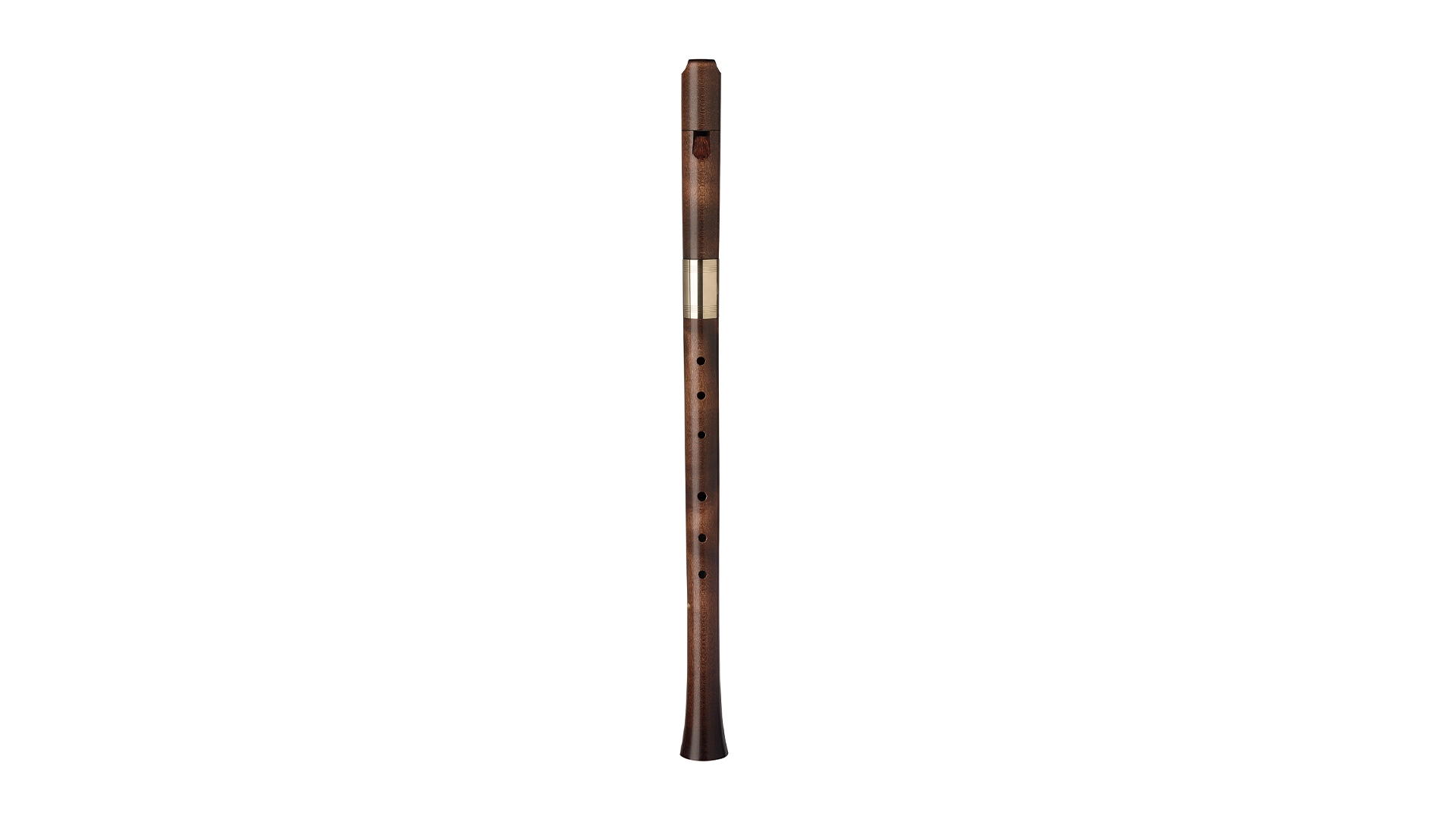Moeck, "Renaissance Consort", tenor in c', renaissance fingering, 442 Hz, 1,5 oct. range, maple stai
Renaissance Fingering, Item: 8421-MOE Stained, 442 Hz
The Tenor recorder with the article number: 8421-MOE built by Moeck is an instrument, that in playing constantly can make joy.
This peculiarity is due to the special combination of the special concept in interplay with the qualities of the material Maple.
The bore
The geometry of the inner bore of the instrument is light cylindroconical and on average further. This kind of bore course grants the instrument this typical sound.In principle, recorders with wider bore sound warmer, fuller, more fundamental and thus more suitable for ensembles than instruments with narrower scale.
For what styles can the recorder be used for?
Maple is particularly for instruments used for: Focus on Renaissance and folk, other styles possible.To whom is this recorder addressed?
From this it results that instruments made of Maple are especially for ambitious amateurs and advanced players recommendable. A second to be heeded principle is that a better instrument makes the interaction naturally enriching at first glance low-cost offer.The windway of a recorder
The windway is the area in the instrument headpiece where the blowing air of the musician is formed into a thin sheet of air. This air leaf is the determining element of tone production. At the labium, the air flow is very quickly alternately directed inwards and outwards. This swinging stream stimulates the air in the body of the instrument. And this is the origin of the recorder sound. This is the reason why the labium must not be damaged in any case. The same rule applies to the windway. Otherwise suffer the variability of musical expressiveness of the instrument.
The windway of the model 8421-MOE of Moeck has this windway shape: Curved, conical.Conical shaped windways accelerate breathing air more than cylindrical windways.
Never violate windway and labium! Their meaning for the sound is very complex in their geometric shaping. Damages here often lead to a total loss!
Fingerings
The instrument Moeck 8421-MOE is offered in the following version: Renaissance Fingering .
Construction of the body
The number of parts of an instrument shapes basically the way the recorder in daily use on the one hand is simple to handle in terms of easy assembling and on the other hand for the safe transport.
A point that becomes especially important when larger or multiple instruments transported.
{Experienced ensemble players can tell you a thing or two about this. Or ask large playing circles.
Leaders of recorder orchestras know how useful good and compact recorder transport packaging is.
Packaging and accessories
The recorder is supplied as standard with: CaseThe useful accessories included: Wiper rod, drying cloth, pivot grease, care instructions, fingering chart
Advice for finding a new instrument
Inform yourself in detail!The search for your new recorder should in no case be influenced by well-meaning advice.
Get your own realizations after trying an instrument. Don't let "expert"-opinions.
Do not let others stop you from testing a unkown recorder model.
Your musical perception is as unique as you are.
Therefore, only you can decide which wind tunnel shape will personally you.
Our recommendation is therefore: Try also unknown models!
After that you will be amazed and can make a confident decision.
Information about instruments with keys
Not always can the tone holes be drilled in the places in the that are easy and pleasant to reach with the fingers. Especially with bass recorders sit for acoustic reasons some tone holes ergonomically not to reach. On these instruments, keys are added, which make gripping significantly easier, or possible in the first place.This allows it to be {pleasant|light|ergonomic|conspicuous|above average| good play even by players with smaller hands.
The instrument 8421-MOE has the following flaps:
| Accessories: | Wiper rod, drying cloth, pivot grease, care instructions, fingering chart |
|---|---|
| Bore shape: | light cylindroconical and on average further |
| Construction: | 2-part (head, bottom piece) |
| Fingering: | Renaissance Fingering |
| Material: | Maple |
| Material: Botanical name: | Acer pseudoplatanus |
| Material: Country of origin: | Canada |
| Packing: | Case |
| Surface treatment: | Stained |
| Target group: | Ambitious amateurs and advanced players |
| Weight with case: | 1.413 kg |
| Windway: | Curved, conical |
| Size: | Tenor |
| Tuning pitch: | 442 Hz |
| Group: | Recorder |
| Material structure: | Maple: The texture is fine and uniform. |
| Musical use: | Focus on Renaissance and folk, other styles possible |
| Sound characteristics: | Maple: Warm and clear, slightly thinner than pearwood |
Login



